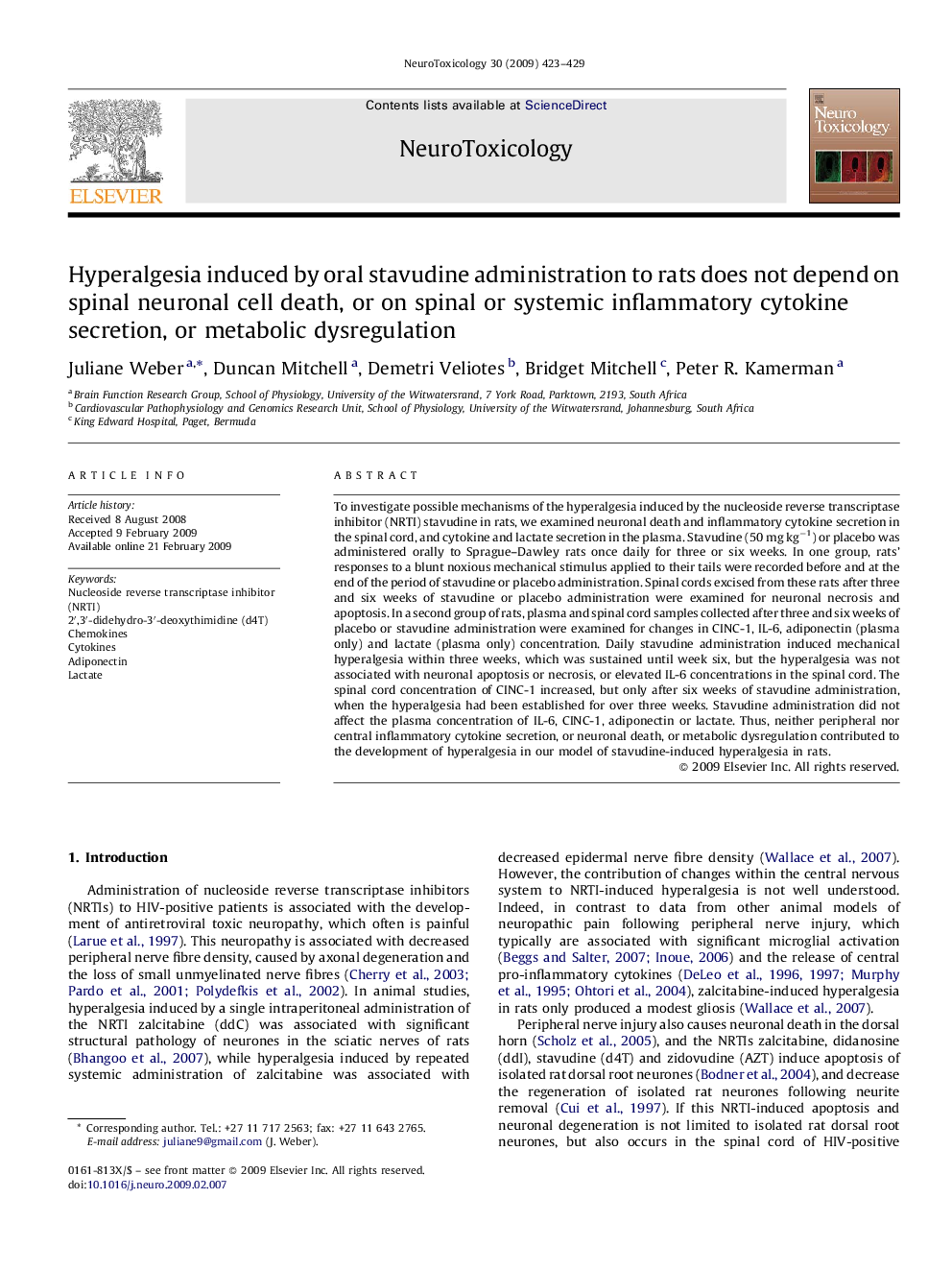| Article ID | Journal | Published Year | Pages | File Type |
|---|---|---|---|---|
| 2590696 | NeuroToxicology | 2009 | 7 Pages |
To investigate possible mechanisms of the hyperalgesia induced by the nucleoside reverse transcriptase inhibitor (NRTI) stavudine in rats, we examined neuronal death and inflammatory cytokine secretion in the spinal cord, and cytokine and lactate secretion in the plasma. Stavudine (50 mg kg−1) or placebo was administered orally to Sprague–Dawley rats once daily for three or six weeks. In one group, rats’ responses to a blunt noxious mechanical stimulus applied to their tails were recorded before and at the end of the period of stavudine or placebo administration. Spinal cords excised from these rats after three and six weeks of stavudine or placebo administration were examined for neuronal necrosis and apoptosis. In a second group of rats, plasma and spinal cord samples collected after three and six weeks of placebo or stavudine administration were examined for changes in CINC-1, IL-6, adiponectin (plasma only) and lactate (plasma only) concentration. Daily stavudine administration induced mechanical hyperalgesia within three weeks, which was sustained until week six, but the hyperalgesia was not associated with neuronal apoptosis or necrosis, or elevated IL-6 concentrations in the spinal cord. The spinal cord concentration of CINC-1 increased, but only after six weeks of stavudine administration, when the hyperalgesia had been established for over three weeks. Stavudine administration did not affect the plasma concentration of IL-6, CINC-1, adiponectin or lactate. Thus, neither peripheral nor central inflammatory cytokine secretion, or neuronal death, or metabolic dysregulation contributed to the development of hyperalgesia in our model of stavudine-induced hyperalgesia in rats.
